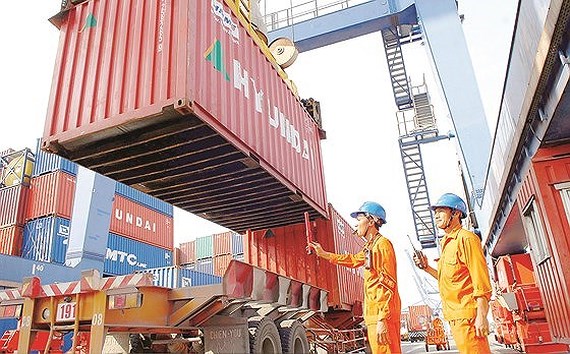 Economy
Economy


|
| Cát Lái port in HCM City. Việt Nam is seeking investment by international port operators to develop its ports. — Photo courtesy sggp.org.vn |
HCM CITY — Việt Nam is encouraging investors from all around the world to develop its ports, according to the Việt Nam Maritime Administration.
The country’s ports system has attracted enormous investment, helping increase cargo capacity from just 3.4 million tonnes in 1995 to 165.7 million tonnes in 2017.
But an estimated VNĐ80-100 trillion (US$3.43-4.3 billion) - more is required, including half for port infrastructure.
Trịnh Thế Cường, director of the administration’s Shipping and Maritime Services said: “This is a very big amount. So we mobilise from all sources.”
Public funding is focused on public infrastructure that connects key ports and regional hubs.
“This means, with our limited budget, the Government of Việt Nam encourages port operators and shipping operators from all around the world to come and invest in ports, with a focus on public-private partnerships for new large ports,” he explained.
Nguyễn Ngọc Huệ, president of the Việt Nam Association of Ports-Waterways-Offshore Engineering, said marine transport played a very important role in Việt Nam’s economy.
“Marine transport just accounts for 5.2 per cent of domestic cargo share, but more than 92 per cent of import-export.”
The volume of goods transported through ports had increased by 10.9 per cent annually on average, he said.
Lê Quang Trung, vice president of the Việt Nam Maritime Corporation, said: “Việt Nam is the fastest growing container market in Southeast Asia with an annual compounded growth rate of 14.4 per cent between 2000 and 2017.
“Total container volumes at Việt Nam’s ports reached 11.5 million TEU in 2018.
“Ports in the south of the country accounted for 62 per cent of the container volume handled in the country in 2017, while the north had a 34 per cent share.”
Huệ said cargo transported through ports is forecast to keep rising sharply from 442 million tonnes in 2017 to 640-680 million tonnes in 2020 and 1.04-1.16 billion tonnes in 2030.
Concurring with Huệ, Cường said Việt Nam’s rapidly growing trade and production had caused the volume of cargo passing through its seaports to surge, making port projects appealing to foreign investors.
“Many shipping lines from many countries want to invest in Việt Nam’s ports.”
Marine development strategy
The Việt Nam Marine Strategy for until 2020 seeks to create a strong nation at sea and to get rich from the sea.
The country seeks to modernize sea transport, improving its quality, making it affordable and safe, reducing pollution and energy use, and integrating with the shipping market in the region and the world.
The country will also “upgrade, invest deeply and bring into full play the capacity and efficiency of existing ports, focusing on building international transhipment ports and international gateway ports in key economic regions and deep-water ports specialising in handling containers, coal and coal oil, modern equipment.”
Currently the country has 31 ports with a capacity to handle 550 million tonnes of cargo a year.
The major ports include Hải Phòng, Lạch Huyện, Đà Nẵng, Cái Mép-Thị Vải, and Cát Lái. — VNS